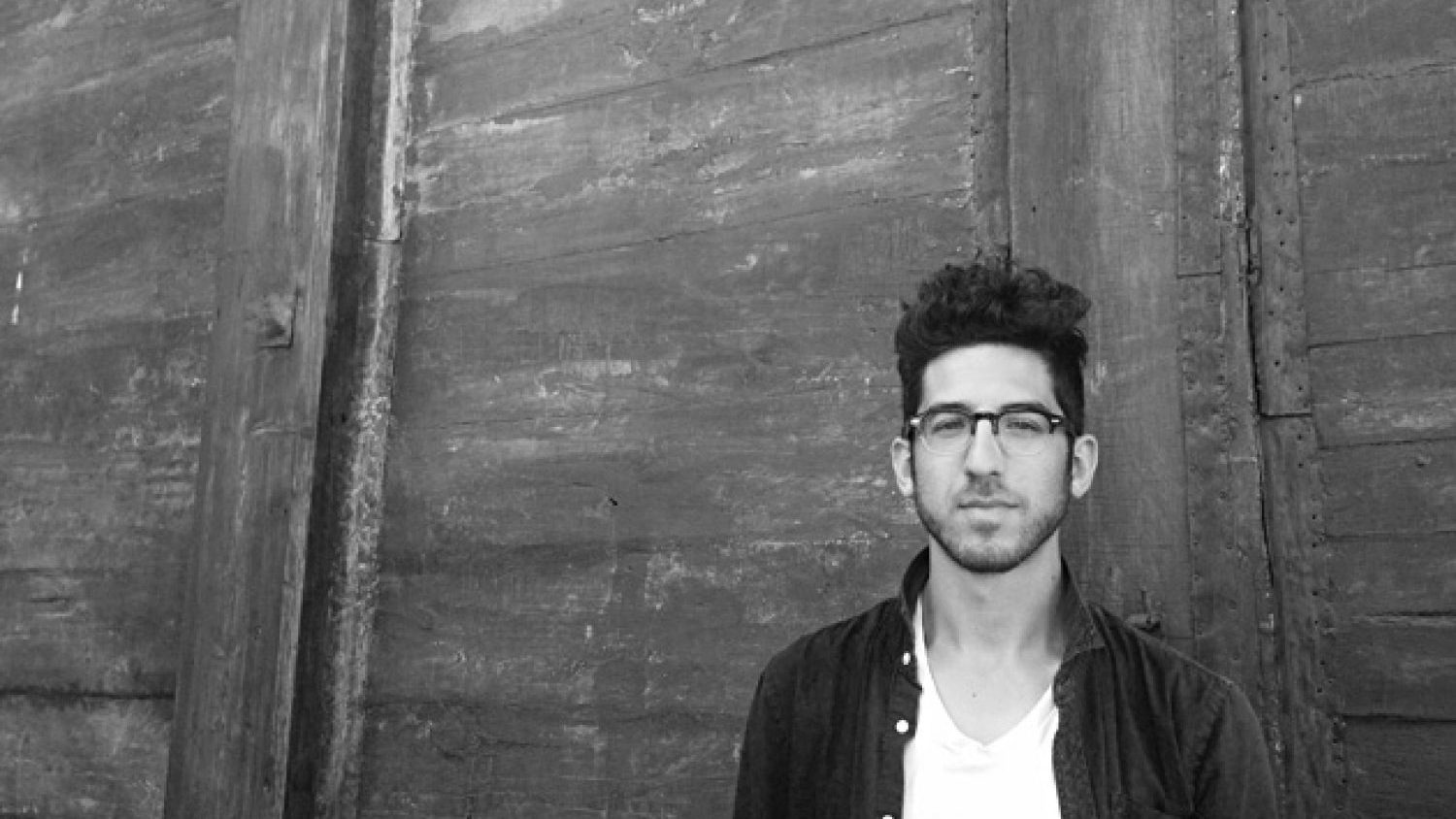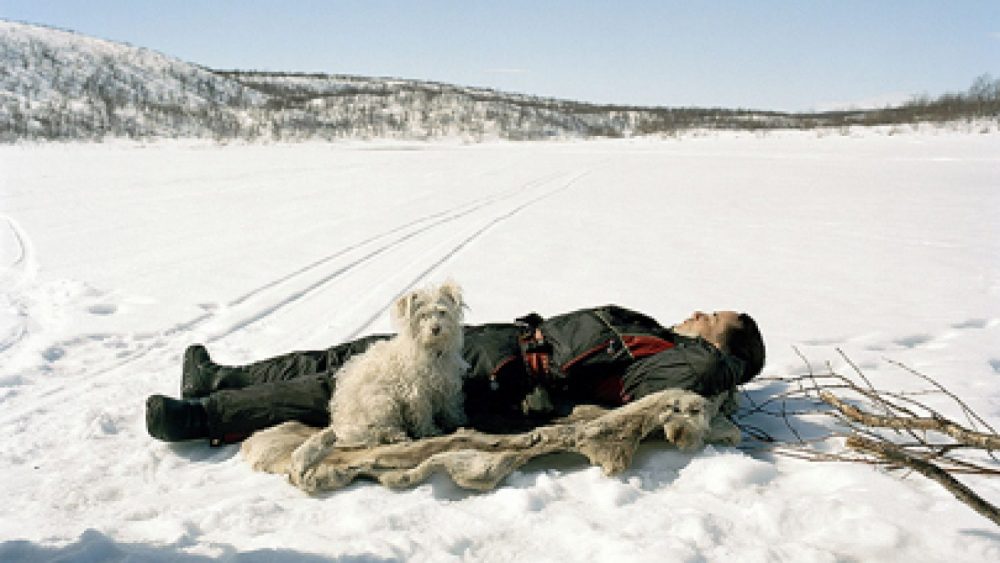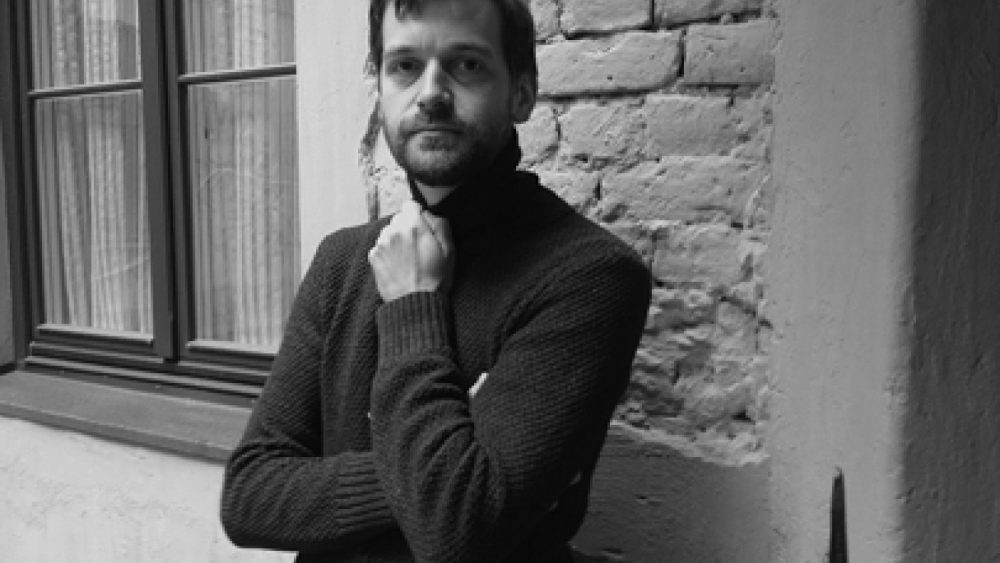Interview with Adam Golfer
Where to draw the line between the individual and the collective experience of history? How to differentiate a fact from an interpretation? These are questions that interest the American photographer Adam Golfer (1985), who for more than seven years has been working on telling a story about his family’s history that has evolved within and in parallel to the story of the Jewish people. Adam’s grandparents were Holocaust survivors and left Europe for the United States after World War II. This was also the time when the state of Israel was founded – an event that has created a whole new set of conflicts and has resulted in the mass displacement of Palestinians. A difficult story unfolds between continents – Adam is convinced that there is no point in speaking of one history, there is only a collection of different views on past events. This is also very apparent in his work, which combines photographs, documents and archive materials, amongst other things. It’s a puzzle where each viewer searches for his own solution.
Adam’s work has been published in TIME, Vogue, Esquire, The Wall Street Journal Magazine, W, as well as elsewhere. He lives and works in New York City, and he’s studying in the Master’s programme in Photography at the Hunter College. At the moment Adam is taking part in the Artist in Residence programme in Kuldīga in Latvia.
A lot of your work has to do with the aftermath of different historical events, and especially with the consequences of WWII. Can you tell me a bit about your interest in these topics and the approach you’ve chosen to talk about them?
My grandparents were Holocaust survivors so I grew up wondering what the history of my family was. Apart from the names of my great grandparents, I knew nothing of what came before because everyone was killed in the camps. So I always had a sense of wanting to understand the history that I couldn’t ever really know, to know more than I could. I know their names but I don’t know who they were.
My dad was always very interested in what happened to his parents (my grandparents), and he passed on this curiosity to me. His parents’ experiences in the war were largely mysterious. Like many survivors, they did not speak about it with him or his siblings. When I was about nine or ten years old, I started to ask questions, and since I was just a kid, my innocent questions turned into a way for my grandfather to open up. From the very beginning [my work] has been tied to this relationship between my grandfather, my father and I. It’s always been an endless and complex subject matter to explore because it comes from a very personal place. But in my projects, I am more concerned with exploring what those pathways and different histories evolved into after the war, rather than unearthing details about my family lineage.

Your project A House Without A Roof is about consequences of the Holocaust, forced migration, the creation of the state of Israel, your life in the United States. For this series you also went to Israel to photograph – what was it like being there? As I understand, your initial idea was to create a documentary about non-violence but then you found it to be impossible.
I was working on a project in Germany for about two years around 2008. It was about the landscape and understanding what sort of violence exists within it, that you can’t really see today but which is there. It was a very formative experience for me, but after I got back, I had a very different point of view about Israel. My sense of politics became much stronger and I felt like Germans were trying so hard – as a society – to grapple with their Nazi history and to pay homage to the horrible things that had happened. I somehow started thinking of the Jewish refugees that settled in what was then British Mandate Palestine, and how the state of Israel was formed, which resulted in hundreds of thousands of native Palestinians being expelled or fleeing because of the violence. Something wasn’t right with that.
I spent time in Israel and the Occupied West Bank, and initially I thought I would make a project about young people on both sides, who were committed to non-violence, but it quickly became apparent that the two sides exist in completely different realities. Palestinians in the Territories are incredibly restricted in their everyday lives, and everything they do is monitored and controlled by the Israeli military. I had been reading a lot of writings based on the architectural theory and studying how the military has constructed bridges, roads and tunnels to separate Israelis from the Palestinians there, so much that there are roads that you can’t drive on unless you’re a Jewish Settler. They’re off-limits to Palestinians. It’s all done to create a physical separation in the landscape, and also to entrench the sense that Israel controls the land.
So, all these things were just swirling around in my head. When I realized that I wasn’t going to make a project about these non-violent activists, the work became more about the oddities of everyday life, mostly for Palestinians in the Occupied West Bank. I came back home three and a half years ago with all of these pictures, which I felt very strongly about but that also felt too straightforward and documentary. Landscapes and ironies were not enough. I sat on the work for three years and didn’t really know what to do with it.
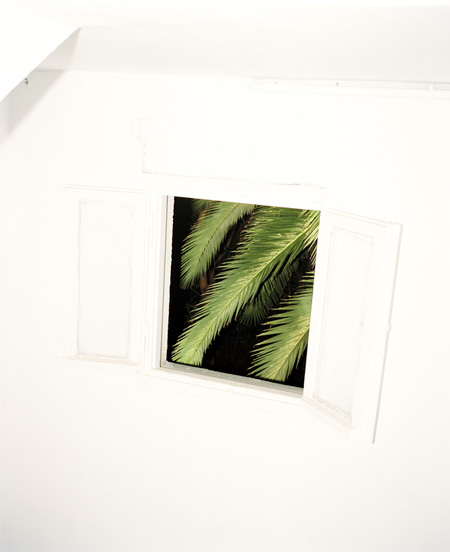
This past year I had an opportunity to go back to the region, and I spent my time visiting archives, collecting artefacts and filling in a lot of the holes in the project that I didn’t know how to negotiate three years ago. I came back with images that were very different from what I had made before and I started writing a lot – incorporating my personal history into it, in a fictional way, thinking about the project as a book and how text and image could function together to deal with the layers. I blended fact and fiction, writing in different voices; as my dad in the 1970s, from the voice of a child, as an older man reflecting on what I had seen, as my present ‘self’ photographing and observing. I wove my family history into the story as an entry-point to negotiate the splintered narratives of war and displacement between Europe, the United States and Israel/Palestine. It became a much more complicated body of work when I let myself be a part of it, rather than trying to pretend I was an objective observer.
So, the project became a mix of my photographs, archival photographs, family photographs, objects from my family. I just so happened to have a telegram my grandfather sent to the US when he was getting on a steamship in 1946 from Germany to come to the US. He wrote to my grandmother: “I’ll be there soon.” It was a Western Union telegram. Then 25 years later my dad sent a Western Union telegram from Israel to his parents in Washington, DC, saying: “I just got here. Things are great.” These strange coincidences and echoes in in my personal history made me question how the displacement of millions of European Jews after WWII directly/indirectly resulted in the displacement of an entirely other population of Palestinians in the Levant. These histories are bound together. I feel very connected to them but I am aware that I am neither Israeli nor Palestinian. I’ve tried to negotiate these narratives without speaking for anyone else.
I feel that there’s much more of a discussion about the future of the Israel – Palestine relationship in the US than here in Europe. I remember being in New York, standing in front of the New York Times building and seeing a big sign that The New York Times is an enemy of Israel, and sensing how big of a topic this relationship is in the country. How do you feel about it?
It is a big topic in the States because the Jewish community has been very supportive of Israel since 1948. But I think things are changing a bit – there’s starting to be more awareness of what is happening in the Occupied West Bank and in Gaza, and every time there’s a new war a new humanitarian crisis unfolds with thousands left dead and thousands more homeless. I think people [in the US] are starting to question what’s really going on in a critical way. I hope that this continues.
There is no such thing as history, there are only histories, and that’s something I’m really interested exploring. There is no one viewpoint about anything. On a very small scale, A House Without A Roof deals with that.

Tell me more about the book – is it going to be published?
Yes, I want to publish it. I made a preliminary edition for an exhibition that opened in Booklyn Artist Space in New York this summer. It’s a first run – I am working on raising funds to publish it on a larger scale.
You have roots in Lithuania. During your stay here are you planning to go and shoot something there in connection with this project or something else?
My dad’s parents were from Siauliai and Kaunas in Lithuania. My mom’s side came to the States about 75 years earlier and part of her family is from Riga. That’s basically where my interest in the Baltics came from, and the reason I came here. I had wanted to come to the region for a long time because, essentially no one in my family has come back, and it seems I’m the one that goes back, wherever that is (laughing).
The project is called A House Without A Roof, because a big influence on the project were these two stories that I read. One is written by the Palestinian author Ghassan Kanafani, which is about a Palestinian couple who fled in 1948 and returned to their house in Haifa approximately 20 years later. The story talks about what it is like to physically knock on the door of the place you were either forced out of or had to flee from. And then there’s the contemporary Israeli writer Etgar Keret. He wrote a story called Suddenly A Knock On The Door, and it’s indirectly dealing with this anxiety from an Israeli point of view. The idea of someone knocking on your door and saying: “Actually, this is my house. I live in this house, and you are now staying at my home.” The idea of these anxieties existing from different perspectives hit me really hard because I’m going to go to Lithuania to see the house out of which my grandmother was torn.
But in terms of the type of work I’m going to make about it, I’m actually not sure because as I’ve told you – I’ve been working on this subject matter for so long, starting from 2008, that I think I want to step away from it for a little while, and let it breathe and let the book be what it’s going to be, and see what comes next.

What attracts you to photography as the best medium to speak about the issues you’re interested in, like history and different interpretations of past events?
I got into photography because it was the most immediate way to reflect on something that I was seeing or imagining. My initial interest in photography was really about the love of looking at things and reflecting on them. But at the core of the medium it deals with time – both freezing it or pulling it apart. History is the study of the past from the viewpoint of the present, and thus is inherently about time.
As I get older, I’m also more interested in things that might not seem obvious at first but that have many types of layered meanings when you look at them with more discerning eyes. Time based media make a lot of sense to me. I work a lot with video as well, and it seems like much more than just an extension of photography. It’s a totally different way of thinking, it’s more four-dimensional, incorporating movement, feeling, sound with the visual. Those things combine to a much more encompassing, extended experience. I go back and forth working with both video and photography.
What are you working on while staying at the Kuldīga Artist’s Residence?
I tend to work really slowly, and I work on projects that I put aside, then revisit after a while, and then put aside again. I’m in Kuldīga for three weeks, but staying in the region for a month in total. Soon after arriving, I realized that there’s no way I’m going to make the type of contextualized historical project that I fantasized about before I came. Instead, the project will be more about my experience in Latvia as an outsider who in some indirect way is coming home. That could take many different forms. So far I have been photographing a lot of young people and I’m really interested in them and the way they relate to their history and this post-Soviet control. What is Latvia after the Soviet Union? That’s interesting to me, but I don’t know how deep I will be able to get into it in the time that I have here.
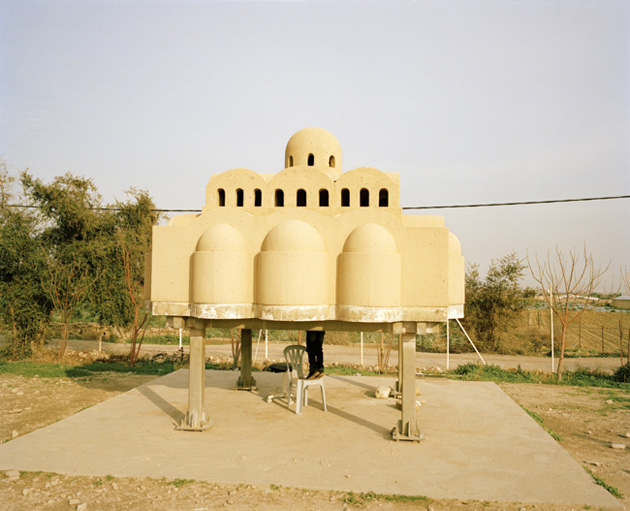
You have quite an impressive portfolio of commercial work. You’ve done editorials for TIME, Vogue, Esquire, W, etc. On your website there’s a mix of images from what could be considered your personal projects and from these editorials. How do you see these things working together?
I think my answer would be very contradictory. For a long time I really separated the two things. A couple of months ago I was sent to photograph an author I really admire. Someone I am very influenced by, think about a lot, and whose works I’ve read. I only had 15 minutes with him, [but the photos I took of him] carry within them a sort of meaning that I think bleeds over in my own work as well, because it’s about interacting and engaging with people and the world.
I feel very fortunate that a lot of the editorial and commercial work I get hired to do isn’t that different from what my personal projects look like. Often I’m asked to do things that look like my personal projects, and the best assignments I’ve had have come from editors calling me and saying that they’ve seen a project of mine, and really love the way it feels and what it carries with it, then them asking whether I could work like that for a given assignment.
I don’t separate these two things that much anymore, I think it’s silly – all of it is still me.
